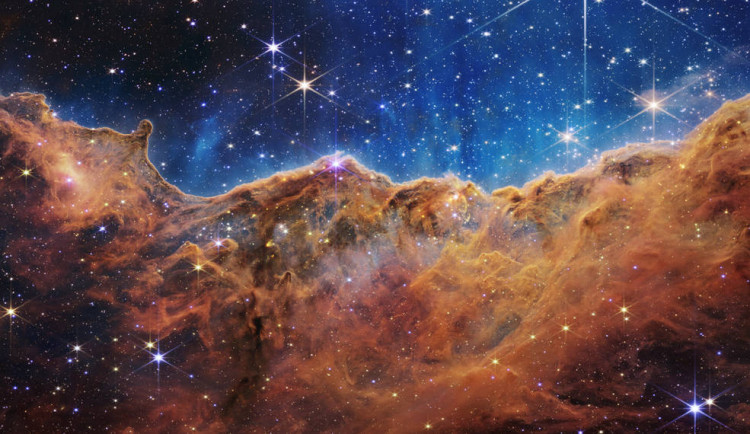It's finally time for the world to see the first photos obtained by the James Webb Space Telescope, the most powerful space telescope ever.
Following a Monday announcement by the president, NASA released additional stunning "first light" images taken by the James Webb Space Telescope on Tuesday. These images show interacting galaxies, a dying star, and a stellar nursery where massive young suns are being born. These images are blazing with gale-force solar winds that sculpt vast clouds of gas and dust.
The development of the largest space observatory in the world started in 2004, and on December 25, the telescope and its enormous gold mirror were finally launched.
The photographs were worth the wait, and they will forever change how we view the universe.
Even to the untrained eye, the photographs take the viewer far beyond the scope of the legendary Hubble Space Telescope, which over the past three decades has provided a regular stream of discoveries and breathtaking images. But the sights from Webb are just spectacular to astronomers.
The infrared light, which is invisible to the human eye, is used by the space observatory to study the mysteries of the universe.
Webb will look directly into the atmospheres of exoplanets, some of which may be habitable, and it may find hints in the ongoing quest for extraterrestrial life.
Additionally, the telescope will examine every stage of the history of the cosmos, including the first glimmers after the great bang that created our universe and the construction of the galaxies, stars, and planets that make up our universe today.
Now, Webb is ready to help us understand the universe's origins and begin to answer fundamental questions about our existence, such as where we came from and whether we are alone in the universe.
According to NASA Deputy Administrator Pam Melroy, the mission, which was originally scheduled to last 10 years, now has enough fuel to last 20 years.
These are just the first of many images from Webb that promise to fundamentally alter our understanding of the universe over the next two decades.
While some of what Webb might reveal has been predicted, scientists are equally excited about the unknowns.
"We don't know what we don't know yet," Amber Straughn said, Webb deputy project scientist for communications at NASA Goddard. "I think it's true that every time we launch a revolutionary instrument into space, like with Hubble, we learn things that completely surprise us but do cause us to sort of change our fundamental understanding of how the universe works."






